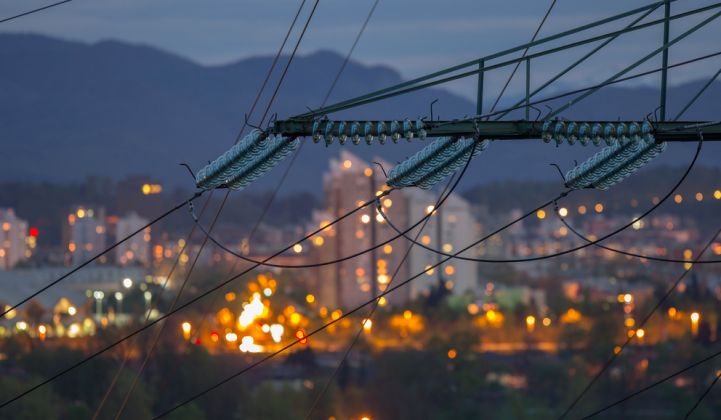The start of 2020 has already seen significant momentum at the grid edge.
Even under pandemic restrictions, distributed energy resource project lifecycles are moving ahead. Distributed energy resources (DERs), sensors and smart meters are enabling utilities and their partners to access a plethora of grid and customer data, enabling remote operations.
However, the coronavirus outbreak is slowing down some DER sectors according to Wood Mackenzie's quarterly update. The crisis will make already lengthy grid edge sales and engineering, procurement and construction processes even more challenging as delays pile up.
Grid edge wins so far in 2020
The start of 2020 signaled sustained hunger for investment at the grid edge as DERs proliferated and electrification continued.
The U.K. government allotted over £1 billion ($1.23 billion) toward improving access to EV charging infrastructure (£500 million) and the support of EV purchases (£532 million).

In the U.S., 11 states have this year made use of Volkswagen settlement funds to invest in fleet electrification and charging-behavior optimization.
In January 2020, the New York Public Service Commission authorized the allocation of $454 million for heat pump installations across the territories of the six electric investor-owned utilities in the state through 2025.
And on the West Coast, the California Public Utilities Commission issued a proposed decision to spend $200 million on two residential-focused building decarbonization pilots.
The power of data in a crisis
According to new WoodMac data, 78 percent of grid edge deployments in the U.S. involve some form of investment in accessing data points on the grid and at customer sites.
The U.S. is home to 103 million advanced metering infrastructure meters; there are 962 million units globally.
As customers keep close watch on their spending, data points from DERs provide utilities with an unparalleled opportunity to engage with their customers.
Emergency conditions also point to new opportunities for grid edge investment. For example, this may be a time when utilities start to embrace deployments in the cloud versus on customer premises.
Downside potential: Exacerbating an already lengthy sales cycle
Utilities are already known for their extended sales cycles, with grid edge applications often requiring one to three years.
The coronavirus pandemic is expected to exacerbate long grid edge sales cycles as onsite visits to conduct inspections, measurements and installations are delayed.
Engineering, procurement and construction issues will affect timelines for the commissioning and interconnection of DERs behind the meter.

Solar and storage are already seeing a clear downside, with a 1.2-gigawatt decline in residential solar in the U.S. and a 20 percent global storage market contraction expected in 2020.
Microgrids are likely to take a unique impact from the pandemic. Past WoodMac data shows a higher potential impact from policy versus a reaction to disasters (such as hurricanes). However, the pandemic doesn’t pose the same kind of power-supply challenges as those seen with extreme weather events.
At this time, WoodMac sees the coronavirus crisis presenting both limited upside and downside to microgrid development.
As sales and marketing efforts for DERs move to remote customer-acquisition operations, it remains to be seen how the efforts will materialize — and at what cost.

How utilities are responding to the pandemic
By and large, commissions have been implementing swift decision-making as the COVID-19 pandemic unfolds.
Most notably, many regions have seen the passage of emergency legislation prohibiting the disconnection of customers for nonpayment.
Commissions are also still moving forward with significant planned spending on electrification efforts. Public utility commissions and government agencies are working remotely, reviewing cases and continuing with regular voting sessions.
Overarching macroeconomic factors will continue to impact the grid edge ecosystem, with pockets of opportunity for grid edge applications emerging along the way.
***
Elta Kolo is content lead for Wood Mackenzie's Grid Edge practice. View the report brochure for the latest Grid Edge Executive Briefing for Q2 here.




